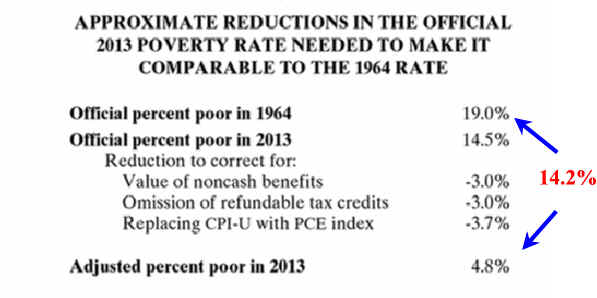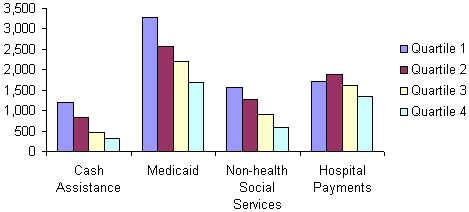Poverty Down Only 4.5% Points
Over Fifty Years
Poverty Down 14.2% Points
Over Fifty Years

See
War on Poverty, Was it Lost?
Legacies
of the War on Poverty
Editors Comments are in red.

This chart "...provides a first
approximation of how correcting the 2013
poverty rate for noncash food and housing benefits, refundable tax credits,
and upward [inflation] bias in the CPI-U would
change the 2013 poverty rate. With these corrections the official poverty
rate falls from 14.5 to 4.8 percent, making the 2013 rate roughly a quarter
of the 1964 rate (19.0 percent). If we were to lower the poverty threshold
for cohabiting couples to match that for married couples the 2013 poverty
rate would have fallen even more." Examples of noncash benefits
include food stamps SNAP), discounted school lunches, subsidized rent,
Medicaid, and Medicare. See
Source


